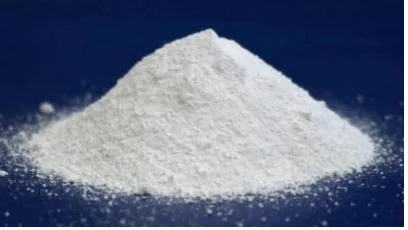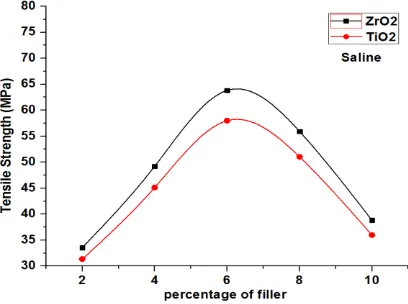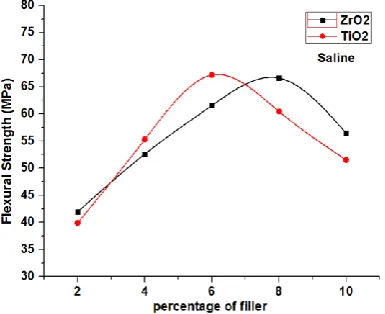© 2017, IRJET | Impact Factor value: 5.181 | ISO 9001:2008 Certified Journal | Page 1086
Comparison of mechanical properties of the Zro2 and TiO2 filler epoxy
composite
P.Sneha Latha
1, M.Venkateswara Rao
2,
1
PhD Scholar, Mechanical EnggDepartment, Acharya Nagarjuna University College Of Engg And Technology,
Andhara pradesh, INDIA
2
Professor, Mechanical EnggDepartment, BapatlaEngg College, Bapatla, Andhara pradesh, INDIA
---***---Abstract -
Effect of TiO2 and ZrO2 filler on mechanicalproperties of the epoxy polymer has been investigated experimentally. TiO2 and ZrO2 filler epoxy composites are fabricated by hand layup technique in a mold and cured under light pressure at room temperature for 48 hour indivisibly. Specimen preparation and testing was carried out as per ASTM standards. The results indicated that the due to the filler addition the mechanical properties of the epoxy composites is enhances the best resistance observed in the ZrO2 filler composites. The strength variation is observed in the trend of plain>petrel>diesel>mineral>saline in Both tensile and flexural.
Key Words: ZrO2, tensile, TiO2, Epoxy.
1.INTRODUCTION
Environmental awareness today motivating the researcher’s world-wide on the studies of natural fiber reinforced polymer composite. This is because natural fibers have the potential of serving as alternative for artificial fiber composite [1-4].
Increase of environmental awareness has led to a growing interest in researching ways of an effective utilization of rice by-product, from which rice husk is particularly valuable due to its high content of amorphous silica and amorphous carbon as the main constituents. [5, 6].Compares to the conventional sources of silica rice husk ash as a ceramic raw material possess advantages like fine particles size and higher reactivity due to its amorphous nature.
There are many applications of natural fibre composites in everyday life. However the main disadvantage of natural fibre is their hydrophilic nature. They also have a poor environmental and dimensional stability that prevent wider use of natural fibre composites. The possibility of using these materials in outdoor applications makes it necessary to analyze their mechanical behaviour under the influence of different weathering conditions such as humidity, saline water, sunlight or micro-organisms. The moisture absorption by composites containing natural fibres has several adverse effects on their properties and thus affects their long-term performance
Sreekumar et al. [7], while studying water absorption characteristics of sisal fiber polyester composites found that diffusion coefficient decreases with chemical treatment of fiber. In addition to this the chemical treatment also decreases water absorption capacity of the composite. They also showed that the composite with benzoyl-chloride treated sisal fiber composite exhibited lower water absorption capacity.
Agrawal et al. [8] performed a saline chemical treatment on oil palm fibers. Silane (siH4) used as coupling agent which modified the interaction between the fiber and the matrix and also increases the tensile strength. Joseph et al. [9] performed a Benzoylation treatment on sisal fibers. They treated the sisal fibers with NAOH and benzoyl chloride (C6H5COCl) solution and observed that treated fibers have reduced hydrophilic nature and increases interaction with the matrix.
For potential application of filler polymer composites a comprehensive study on the moisture absorption characteristic and its effect on mechanical properties are required. In this chapter, the characteristics of moisture weight gain and effect of moisture absorption on mechanical properties of both TiO2 and ZrO2 epoxy composite under different environments (mineral water, Saline water, Petrol and Sub-zero temperature) are investigated.
1.1 Sub Heading 1
Before you begin to format your paper, first write and save the content as a separate text file. Keep your text and graphic files separate until after the text has been formatted and styled. Do not use hard tabs, and limit use of hard returns to only one return at the end of a paragraph. Do not add any kind of pagination anywhere in the paper. Do not number text heads-the template will do that for you.
© 2017, IRJET | Impact Factor value: 5.181 | ISO 9001:2008 Certified Journal | Page 1087 1.2 Sub Heading 2
Sample paragraph, The entire document should be in cambria font. Type 3 fonts must not be used. Other font types may be used if needed for special purposes. The entire document should be in cambria font. Type 3 fonts must not be used. Other font types may be used if needed for special purposes.
2. MATERIALS AND METHODS
2.1 Raw materials used
For preparation of composite the following
materials have been used;
1. Epoxy
2. Hardener
3. TiO2 powder
4.
ZrO2 powder.
2.2 TiO2 powder
[image:2.595.36.240.516.631.2]Titanium dioxide (TiO2 ) is a white strong inorganic substance that is thermally stable, non-combustible, ineffectively solvent, furthermore, not delegated perilous concurring to the United Nations' (UN) Globally Fit System of Classification furthermore, Labeling of Chemicals (GHS). TiO2, the oxide of the metal titanium, happens actually in a few sorts of rock furthermore, mineral sands. Titanium is the ninth most normal component in the world's outside. TiO2 is commonly considered as being synthetically dormant.
Fig-1: TiO2 powder
2.1.3 ZrO2 powder
[image:2.595.308.544.545.726.2]Zirconia, for the most part comprising of ZrO2, has the most elevated mechanical quality and break durability at room temperature of all significant fine ceramic production. It is utilized to make cutting sharp edges, scissors and blades. It is additionally utilized for pump parts because of its unrivaled surface smoothness.
Fig. 2 ZrO2 powder
2.2 Composite Fabrication
The hand lay-up technique was used for preparation of the samples. A wooden mold of dimension (190x270x6) mm was used for casting the composite sheet. A mold release spray was applied at the inner surface of the mold for quick and easy release of the composite sheet. For different weight fraction of fibers, a calculated amount of epoxy resin and hardener (ratio of 10:1 by weight) was thoroughly mixed in a glass jar and placed in a vacuum chamber to remove air bubbles that got introduced. Then calculated amount of TiO2 and ZrO2 is added separately with a weight percentage of 2, 4, 6, 8, 10wt% to the mixture of epoxy resin and hardener. Then the composite mixture is poured in to the mold.Care has been taken to avoid formation of air bubbles. Pressure was then applied from the top and the mold was allowed to cure at room temperature for 72 hrs. During application of pressure some amount of epoxy and hardener squeezes out. Adequate care has been taken to consider this loss during manufacturing so that a constant thickness of sample can be maintained. This procedure was adopted for preparation of 15 weight percentage of fiber reinforced epoxy composite slabs. After 72 hrs the samples were taken out from the mold and then cut in to required sizes as per ASTM standards for different test.
© 2017, IRJET | Impact Factor value: 5.181 | ISO 9001:2008 Certified Journal | Page 1088
(b)
Fig- 3 (a) Wooden mold (b) Composite samples
2.3 Study of Environmental Effect
The performances of ZrO2 composite and TiO2 epoxy composite under different environmental conditions are essential to study. Therefore effect of environment on performance of titanium dioxide and zirconium dioxide epoxy composite samples were subjected to following environments:
Mineral water exposures.
Saline water exposures
Petrol exposures
Diesel exposures
2.3.1 Moisture absorption and swelling thickness
tests
These tests are used to investigate the effect of moisture absorption and swelling thickness on l fibre reinforced composites. The aim of this test is to compare the influence of both fibre reinforcement and water uptake on mechanical properties of fibre reinforcement composites and the related kinetics and characteristics of the water absorption and swelling thickness. There are different mechanisms to moisture diffusion in polymeric composites. The first mechanism having capillary transport into the gaps and flows at the interfaces between fibre and the matrix. The second mechanism having transport of micro cracks in the matrix arising from the swelling of fibres. And the third mechanism having diffusion of water molecules inside the micro gaps between polymer chains. In this test, firstly the samples were dried in an oven for 24 h at 103±2oC .The samples were immersed in boiling de ionized water for given time period (up to 30 min) after that removed from the boiling water and cooled in de-ionized water for 15min at
room temperature. The samples are exposure at different time intervals until the water content in samples reached up to saturation and measured the weight and thickness of the samples. By using weight and thickness difference of the samples, the moisture absorption and swelling thickness was calculated. The percentage weight and thickness gain of the samples was measured at different time intervals and the moisture content and swelling thickness versus square root of time was plotted. Moisture absorption and thickness swelling was calculated by using following equations,
(5)
(6)
Where , and indicate the oven-dry weight and thickness swelling and weight and thickness swelling after ‘t’ time.
2.3.2 Tensile and flexural testing
Specimens for tension and flexural tests were carefully
cut from the laminate using diamond wheel saw and finished to the accurate size using emery paper. The standard test method as per ASTM D 3039-76 and ASTM D790 has been used; length of the test specimen is 140 mm. Specimens were loaded in three point bending with a recommended span to depth ratio of 16:1. The span of 70mm and a cross-head speed used for the flexural tests (three point bending) was 5mm/min. The tensile test and flexural are performed in universal testing machine INSTRON H10KS.The tension test is generally performed on flat specimens. The most commonly used specimen geometries are the dog-bone specimen and straight-sided specimen with end tabs. At the rate of loading, 0.5mm/min was used for testing. For each stacking sequence, five identical specimens were tested and the average result is obtained.3. RESULTS AND DISCUSSION
© 2017, IRJET | Impact Factor value: 5.181 | ISO 9001:2008 Certified Journal | Page 1089
Fig-4 Tensile strength of ZrO2 and TiO2 composites after exposed to Diesel
Fig-5 Tensile strength of ZrO2 and TiO2 composites
Fig-6 Tensile strength of ZrO2 and TiO2 composites after exposed to Saline water
[image:4.595.298.531.67.280.2]Fig-7 Tensile strength of ZrO2 and TiO2 composites after exposed to Mineral water
Fig- 8 Tensile strength of ZrO2 and TiO2 composites after exposed to petrol
[image:4.595.43.265.103.268.2] [image:4.595.42.257.334.515.2] [image:4.595.315.525.345.523.2] [image:4.595.40.244.566.718.2]© 2017, IRJET | Impact Factor value: 5.181 | ISO 9001:2008 Certified Journal | Page 1090
[image:5.595.36.262.103.273.2]Fig-9 Flexural strength of ZrO2 and TiO2 composites after exposed to Petrol
Fig-10 Flexural strength of ZrO2 and TiO2 composites
[image:5.595.309.553.305.467.2]Fig-11 Flexural strength of ZrO2 and TiO2 composites after exposed to Saline water
Fig. 12 Flexural strength of ZrO2 and TiO2 composites after exposed to Mineral water
Fig. 13 Flexural strength of ZrO2 and TiO2 composites after exposed to Diesel
4 CONCLUSIONS
Based on experimental results, this study has led to the following conclusions:
The TiO2 and ZrO2 can successfully be used as reinforcing agent to fabricate composite by suitably bonding with epoxy resin.
On increasing the volume fraction of filler the strength, modulus increases and the best combination is found with 6% wt. fraction in tensile strength and 8wt% filler in flexural strength.
By incorporation of TiO2 and ZrO2 fillers into polymer mechanical properties are improved to great extent.
[image:5.595.38.241.332.502.2] [image:5.595.40.233.554.711.2]© 2017, IRJET | Impact Factor value: 5.181 | ISO 9001:2008 Certified Journal | Page 1091
REFERENCES
[1] A.K. Bledzki, J. Gassan. Progress in Polymer Science-24.
(1999), pp 221–274
[2] G. Pritchard “Plast Addit” , Compd (2004), 6:18–21.
[3] K. G. Satyanarayana, A. G. Kulkarni, and P. K Rohatgi, J.
Scientific & Industrial
[4] G. Bogoeva-Gaceva, M. Avella, M. Malinconico, A.
Buzarovska,A. Grozdanov, G. Gentile, M.E. Errico. “Polymer Composites”, Wiley Inter Science. Research, 40 (2007) pp 222-37.
[5] W.Shigetaka, M.Weerasak & H.Zhemchai, “Survey of the
Research on the utilization of Rice Husk and Rice Husk Silica,” Proc. 1st workshop on the utilization of Rice Husk and Rice Husk Silica, (2005), pp 6-14.
[6] T.Yamaguchi, T.Sekiguchi, H.Toyoshima, E.Kohira,
S.H.Shikano & K.Hokkirigawa, “Friction and wear properties of new hard porous carbon materials made from Rice Chaff,” Proc.3rd Asia Int. Conf. Trib., (2006), pp 379-380
[7] Sreekumar, P. A., Thomas, S. P., marc Saiter, J., Joseph, K.,
Unnikrishnan, G., & Thomas, S. (2009). Effect of fiber surface modification on the mechanical and water absorption characteristics of sisal/polyester composites fabricated by resin transfer molding. Composites Part A: Applied Science and Manufacturing, 40(11), 1777-1784.
[8] Agrawal R, Saxena NS, Sharma KB, Thomas S, Sreekala
MS, Mater Sci Eng, 2000 A 277:77.
[9] Joseph K, Mattoso LHC, Toledo RD, Thomas S, de
Carvalho LH, Pothen L, Kala S, James B. “Natural polymers and agrofibers composites”. Embrapa, USP-IQSC, UNESP, Brazil. 2000.Kornack and P. Rakic, “Cell Proliferation without Neurogenesis in Adult Primate Neocortex,” Science, vol. 294, Dec. 2001, pp. 2127-2130, doi:10.1126/science.1065467.
BIOGRAPHIES
PhD Scholar, Mechanical Engg Department, Acharya Nagarjuna Engg College, Andhara pradesh, INDIA
Professor, Mechanical Engg Department, Bapatla Engg College, Bapatla, Andhara pradesh, INDIA


